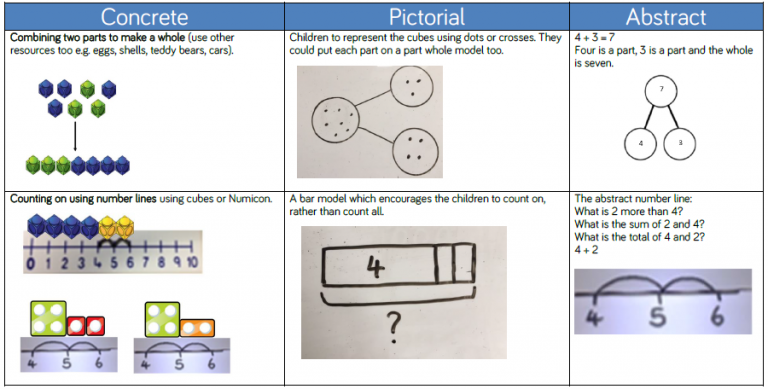The teaching of mathematics in our schools ensures that fluency, reasoning and problem solving skills are developed in every learning opportunity. We recognise the importance of maths in our daily lives and help our children to:
- learn the skills of arithmetic, geometry and measure that these can be used in everyday life and developed later for the specific demands of a particular career.
- develop problem-solving and reasoning skills that are so vital in day-to-day life
- recognise Mathematics and mathematical thinking as a life skill
- develop creative thinking skills – an invaluable skill in every subject area
- develop an ability to use and apply Mathematics skills across the curriculum
We use the White Rose schemes of work to implement the National Curriculum for mathematics. These schemes of learning are designed to support a mastery approach to teaching and learning, as well as to support the aims and objectives of the National Curriculum.
The White Rose schemes have number at the heart and a lot of time is spent reinforcing number to build competency. It also provides opportunities to build reasoning and problem solving into each lesson.
White Rose believes that all children, who are introduced to a concept, should have the opportunity to build on their abilities by following a concrete-pictorial-abstract approach. This approach recognises that in order for pupils to understand abstract concepts, they must first learn mathematical concepts through the use of concrete resources and pictorial representation:
Concrete is the ‘doing’ stage, using concrete objects to solve problems. It brings concepts to life by allowing children to handle physical objects themselves.
Pictorial is the ‘seeing’ stage, using representations of the objects involved in maths problems. This stage encourages children to make a mental connection between the physical object and abstract levels of understanding, by drawing or looking at pictures, circles, diagrams or models which represent the objects in the problem.
Abstract is the ‘symbolic’ stage, where children are able to use abstract symbols to model and solve maths problems.
Below is an example of this approach in relation to teaching addition.

